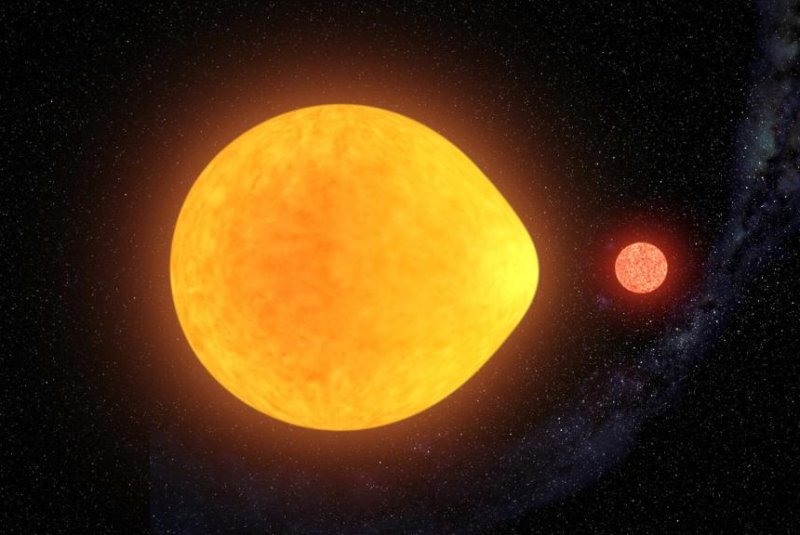An artistic rendering showcases the world's first known one-sided pulsar, which is tidally locked with its companion, a red dwarf. Photo by Gabriel Pérez Díaz/IAC
March 9 (UPI) -- Astronomers have discovered a new type of star that only pulsates on one side. The single-sided pulsar, part of a binary star system with a red dwarf, was found inside the Milky Way, 1,500 light-years from Earth.
Scientists described the new star Monday in the journal Nature Astronomy.
"What first caught my attention was the fact it was a chemically peculiar star," study co-author Simon Murphy, researcher with the Sydney Institute for Astronomy at the University of Sydney, said in a news release. "Stars like this are usually fairly rich with metals -- but this is metal poor, making it a rare type of hot star."
Astronomical models have predicted such a star, but HD74423 is the first one to be documented.
"I've been looking for a star like this for nearly 40 years and now we have finally found one," said co-author Don Kurtz, astronomer at the University of Central Lancashire in Britain.
Stellar pulsation isn't new. Stars of all ages and sizes pulse, and pulsations vary widely in their timing and intensity. But until now, astronomers had never seen a star that pulsates mostly on just one hemisphere.
According to the new study, the star's companion, a red dwarf, is responsible for the one-sided nature of the star's pulsations. Because the two stars orbit one another in less than two days, the bigger of the two stars is being distorted into a pear-like shape by the gravitational pull of the companion.
HD74423, which features a mass 1.7 times that of the sun, was originally identified using NASA's TESS satellite, which is primarily focused on finding exoplanets orbiting Milky Way stars.
"The exquisite data from the TESS satellite meant that we could observe variations in brightness due to the gravitational distortion of the star as well as the pulsations," said lead study author Gerald Handler, professor at the Nicolaus Copernicus Astronomical Center in Poland.
The one-sided pulsations were initially spotted by citizen scientists tasked with looking for unexpected patterns among TESS data. Astronomers took a closer look once they were alerted to the phenomena. The observations showed the strength of the star's pulses varies, and the variation is synchronized with the binary orbit.
"As the binary stars orbit each other we see different parts of the pulsating star," said study co-author David Jones, a researcher at the Institute of Astrophysics on the Canary Islands. "Sometimes we see the side that points towards the companion star, and sometimes we see the outer face."
The stellar pulsations only appeared when one specific hemisphere was visible. Now that scientists know the one-sided pulsar is out there, researchers expect to find more, especially as more sophisticated instruments and powerful observatories come online.















